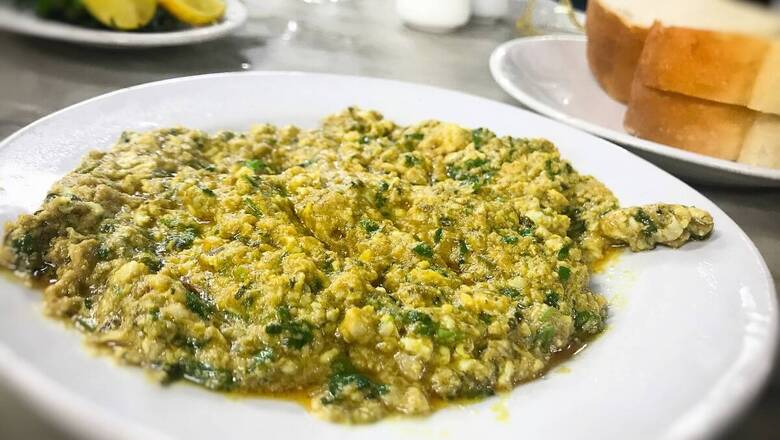
views
The queue of little boys, teachers who had arrived early, parents, drivers and maids who had come to drop their kids to school, would start growing till the big bell rang for the start of school. We’d bite into that soft bread, fresh from the bakery, and spicy kheema in between. It was a love affair with kheema, and this is where it started. This kheema was available through the day, at least till lunch time when it finally ran out.
As we graduated to a higher class and could smuggle out of the compound, right across our school’s St. Anne’s Church, at the foot of Nesbit Bridge, was an Irani café, Queen Mary Restaurant. Hurriedly removing our blue uniform ties so that we could go incognito, we would rush in and order a plate of kheema and pav. The kheema was spicy, garnished with green chillies with a few green peas inside. Floating in generous amounts of oil, it was the best kheema money could buy. Till this day, if I am in the Mazagon area, I make it a point to grab a plate of Kheema Pav. It’s as good as it was all those decades ago.
Galouti, Kakori or Seekh?
Kheema by itself is still considered poor man’s food and you rarely see it on the menu of an upscale or 5-star restaurant. It’s no surprise, since kheema had a reputation. That it was made of bits of meat left over that nobody wanted, so they minced it up and sold it as kheema. And there is some truth to that. Kheema is often a way of using cheaper or tougher cuts of meat that may take long to cook normally, but when minced, cook faster.
Customarily, if you are buying mutton, you would choose the choicest parts, like the upper shoulder for curries, lower shoulder for Nihari, loins for a Korma or shanks for a Nalli Nihari, neck for soup and ribs or chops for… well chops. Often, the stripes and boneless leftovers were consigned to making mince. When buying kheema, I always choose a great shoulder piece with bones and ask the butcher to mince it in front of me. No, not in a mincing machine, but by hand.
ALSO READ| What The Fork: Kunal Vijayakar on How to Have Your Bread and Eat It Too
Although there is so much scepticism about kheema, which meat has been used, which cut it is, if you look at all the great khansamas of Lucknow, and the heritage recipes of Awadhi cuisine, they use kheema as clay to mould it into the most artistic kebabs and gravies. The galouti and kakori are a fine example of how minced meat or kheema can be ameliorated into a delicate, refined and cultivated delicacy.
My favourite kheema kebab is the seekh kebab and I grew up eating these from the kebab walas on the streets of Mumbai. Usually made of buff, on the road and in some of the old, cheap Muslim restaurants, and mutton in the slightly better ones, seekh kebabs for me taste best on the streets. Spiced with garlic, coriander and black spices, when hot off the fire, these nearly black seekh kebabs are so soft and tender that they actually melt in the mouth. The secret is fat. The mince is mixed with generous amounts of fat or butter and the more fat you add, the softer and tender the kebabs get. With cold-sliced onions, which have been chilling on ice, a few sprigs of mint leaves and freshly squeezed lemon juice, all you need is a hot khameeri roti to complete the experience.
The Kheema at Home
The kheema at home was always coarsely hand-minced and with the bones, and we cooked it with chunky slices of potato. The preparation was simple, just the basic ginger-garlic, red chili, turmeric and full garam masala. But to the kheema, my grandmother always added fried raisins. She also never washed the kheema or put water in the kheema while cooking, instead let the kheema cook first on a high flame and then with a cover, on a low flame, in its own juices. The chunky slices of potato absorbed the spice and meat flavours and the raisins added just that caress of sweetness to the spices. I do miss that home kheema.
We would also make kheema buns or what we called “Kheema Chekavta”—egg (kavat)-shaped bread stuffed with kheema and raisins. Fresh from the oven, you could eat half a dozen in one sitting. Or, a traditional Shepherd’s Pie but with spicy Maharashtrian-style kheema. If in an adventurous mood, the cook would stuff large tomatoes or big green capsicum with masala kheema and bake them in the oven.
ALSO READ| What The Fork: Kunal Vijayakar’s Ode to the Street Food Vendor in India, Who Too is a Frontline Fighter
Amongst the Parsis, kheema is often cooked in light gravy with small pieces of potato and masala but served on a bed of dry yellow khichdi accompanied by sweet and spicy green coconut chutney. The Goans make kheema chops. Mashed potato patties stuffed with spicy kheema cooked with red chillies, onions and spiked with vinegar, and then crumbed or rava fried. You know everything fried tastes good. But in Punjabi dhabas, the few that are non-vegetarian, mutton or ‘meat’ as they call it is cooked in gravy made of minced meat or kheema with chunks of mutton. Oily and spicy, it’s an indulgence that I’d never miss if on the road in Punjab.
Of course, for me, Mumbai’s Kheema Pav is the best. Mutton mince cooked in a green masala, with a strong flavour of fresh coriander, green chillies, whole pepper corn and mint, mopped up with hot fresh Irani bakery bread is the ultimate breakfast. If you are feeling gluttonous, you can opt for a Kheema Ghotala, which is the same kheema scrambled with egg. But the ultimate for me, is a plate of this kheema with a runny sunny side up egg on top. To dip crusty hot bread in the yolk and make it run into the mince, then scooping up the gooey, spicy mixture and relishing every bite is what makes kheema worth living for.
Read all the Latest News, Breaking News and Coronavirus News here




















Comments
0 comment